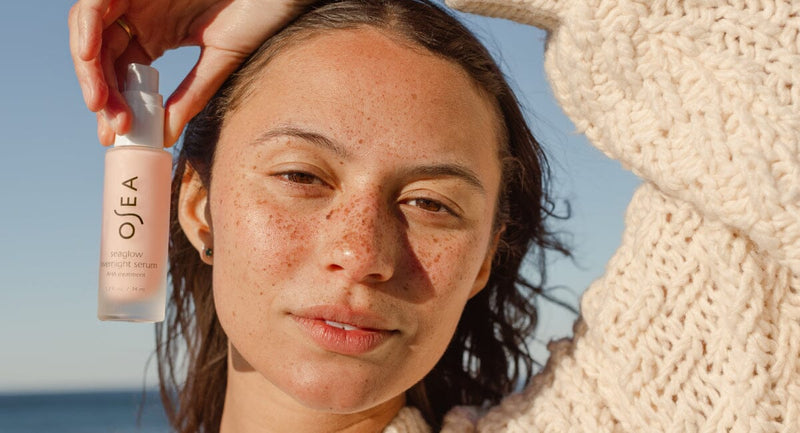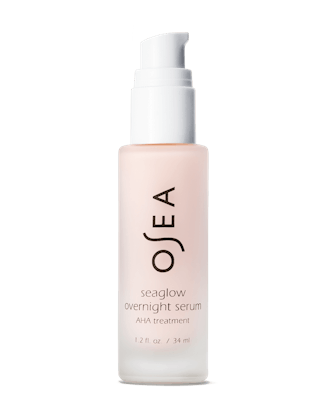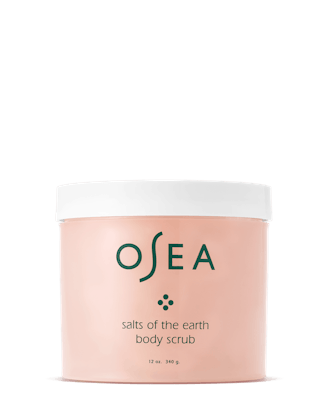While following your daily and nightly skincare routine, you might feel bumps, scaly patches, and pitting as you gently cleanse and apply other products. This is commonly known as textured skin, and it can stem from numerous causes.
It’s perfectly natural for skin to have some surface texture, but there’s a difference between that and unevenness caused by specific concerns. No matter the cause, there are ways to take a proactive approach and achieve a visibly smoother, silkier complexion.
What Is Textured Skin?
As mentioned, textured skin is a catch-all term to describe lines, bumps, rough patches, pits, and pockmarks. It’s normal to experience a certain degree of texture, which can be attributed to genetics.
Age can also contribute to skin’s texture and appearance over time. This is due to skin regeneration, the scientific term for the shedding of dead epidermis (top layer) skin cells to expose a new layer¹. The renewal process slows down as you age, which leads to a buildup of dead skin cells that create dullness and make texture more prominent.
How much time you spend in the sun matters, too. Although soaking in sunlight is a great source of vitamin D, exposure to ultraviolet rays causes photoaging². This refers to cellular damage to DNA in the dermis (deepest) layer that eventually becomes visible on the surface.
Specifically, exposure to UVA (ultraviolet radiation) damages the elastin fibers, collagen, capillaries, and epidermal cells. Exposure to UVB light (ultraviolet radiation with a shorter wavelength) takes its toll on DNA in the epidermis layer. Uneven, rough texture is one of the consequences of these cellular changes.
Specific Concerns That Affect Texture
Everyone experiences natural skin texture due to genetics, age, and sun exposure, but it could be a symptom of an underlying skin condition. Conditions like eczema and various forms of dermatitis affect the moisture barrier, drying out the tissue and making it prone to flakiness³.
Immune system issues could affect skin cell growth, which can also cause dryness and other textural concerns. An overproduction of sebum can clog pores and make skin more susceptible to breakouts.
A thorough skincare routine can help minimize the appearance of texture, but the root cause will need to be discussed with a healthcare provider.
How to Get Rid of Textured Skin
Use Lactic Acid
Skincare products containing lactic acid gently remove dead skin cells to unveil new tissue while also providing much-needed hydration to combat chronic dryness⁴.
This non-abrasive exfoliating agent—plus malic, tartaric, and citric acids—is a standout ingredient in the Seaglow Overnight Serum AHA Treatment. By design, serums contain high concentrations of specific ingredients to target specific concerns. Rub the solution into your face after washing as part of your nighttime routine and then rinse it off in the morning.
Incorporate Vitamin C Into Your Routine
Products for textured skin that contain vitamin C are essential to restore your youthful complexion. This powerful antioxidant increases water retention⁵ to keep skin hydrated and glowing. Pair your vitamin C products with sunscreen to reduce the risk of further damage caused by ultraviolet radiation.
Take Care of Your Body
Textured skin isn’t just a facial concern—it can occur anywhere on the body. Sea salt is commonly used in skincare to help minimize texture. The granules effectively slough dead skin cells away before they lead to pimples, flaking, and dullness.
With pink Himalayan and red Hawaiian sea salts, the Salts of the Earth Body Scrub will expertly eliminate the rough patches from hands, arms, legs, and feet. The shea butter and wild Gigartina seaweed help provide lasting nourishment and softness.
Citations
1. Walters, M. Boost Your Skin’s Regeneration Process for a Glowing, Vibrant Complexion. Healthline. Retrieved on April 21, 2023, from
https://www.healthline.com/health/skin-regeneration
2. Photoaging. Yale Medicine Fact Sheets. Retrieved on April 21, 2023, from
https://www.yalemedicine.org/conditions/sun-damage
3. Dry Skin. Cleveland Clinic. Retrieved on April 21, 2023, from
https://my.clevelandclinic.org/health/diseases/16940-dry-skin
4. Lukas, E. (11 September 2022). Yes, There’s an Acid That Doesn’t Sting or Burn Sensitive Skin. InStyle. Retrieved on April 21, 2023, from
https://www.instyle.com/beauty/skin/lactic-acid-for-skin
5. Curtis, L. (18 October 2022). Vitamin C Benefits for Skin. Verywell Health. Retrieved on April 21, 2023, from
https://www.verywellhealth.com/vitamin-c-for-skin-5084225


